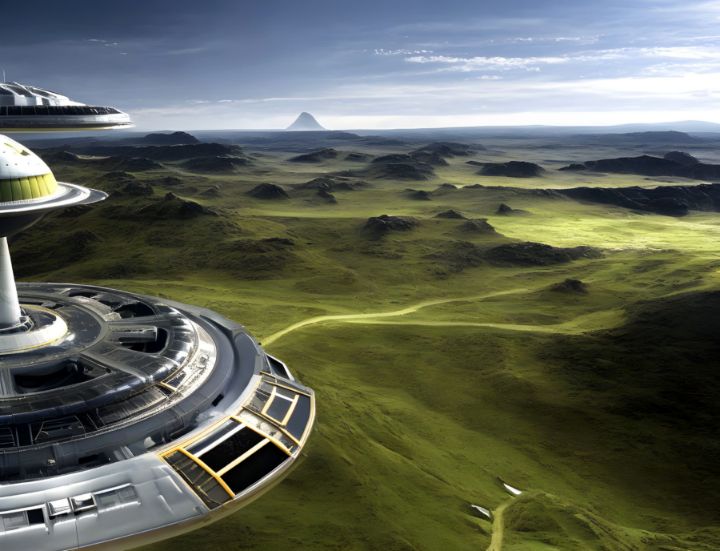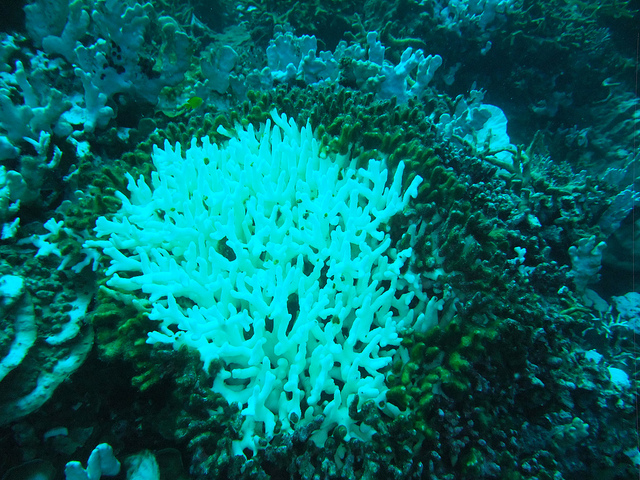Report on the Implementation Dialogue for the Maritime Spatial Planning Directive
A high-level implementation dialogue on Maritime Spatial Planning (MSP) was convened in Brussels on July 1. The event, hosted by Commissioner for Fisheries and Oceans, Costas Kadis, gathered key stakeholders from industry, civil society, and public authorities to assess the current MSP Directive (MSPD). The central focus was evaluating the directive’s effectiveness and identifying necessary enhancements to address dynamic marine environmental changes and advance the United Nations’ Sustainable Development Goals (SDGs).
Assessment of the Current MSP Directive Framework
Participants affirmed the MSPD’s value as a foundational framework providing consistency and flexibility for maritime development. However, a consensus emerged on the need for significant improvements to better integrate environmental protection and sustainable food production. This aligns with the overarching objectives of SDG 14 (Life Below Water) and SDG 2 (Zero Hunger) by ensuring that marine ecosystems are managed sustainably while supporting global food security.
Key Areas for Enhancement and SDG Integration
The dialogue identified several priority areas for strengthening the MSPD, with clear linkages to the 2030 Agenda for Sustainable Development.
-
Strategic Policy Alignment
A primary recommendation was to ensure MSP is explicitly aligned with broader EU policies. This integration is critical for achieving a synergistic impact across multiple SDGs:
- Climate Policy: Supporting SDG 13 (Climate Action) through the strategic allocation of space for climate change mitigation and adaptation measures.
- Biodiversity Policy: Directly contributing to SDG 14 (Life Below Water) and SDG 15 (Life on Land) by safeguarding marine habitats and species.
- Energy Policy: Facilitating the growth of renewable offshore energy to advance SDG 7 (Affordable and Clean Energy).
- Food Security Policy: Protecting fishing grounds and aquaculture sites to bolster SDG 2 (Zero Hunger).
-
Inclusive Stakeholder Engagement
The dialogue stressed the critical importance of early and meaningful involvement of all relevant parties, particularly fisheries and local communities. This approach is fundamental to achieving SDG 10 (Reduced Inequalities) and SDG 8 (Decent Work and Economic Growth) by ensuring equitable benefit-sharing and protecting livelihoods dependent on marine resources, including the specific targets of SDG 14.b concerning small-scale fishers.
-
Administrative and Process Simplification
Stakeholders called for a reduction in administrative complexity and delays in licensing procedures. Improving coordination, especially for marine conservation efforts, enhances institutional effectiveness, directly supporting the principles of SDG 16 (Peace, Justice and Strong Institutions).
-
Cross-Border and Cross-Sectoral Collaboration
A strong emphasis was placed on increasing data sharing and harmonising planning approaches across different sea basins and regions. This fosters international cooperation, which is the core tenet of SDG 17 (Partnerships for the Goals).
Further Recommendations for Sustainable Marine Governance
In addition to the main discussion points, participants advocated for several other measures to reinforce the sustainable use of marine space:
- Conducting better assessments of the cumulative impacts of intensified activities at sea.
- Implementing stronger legal protections for ecologically sensitive marine areas.
- Actively supporting and planning for the shared, multi-use of maritime space to balance economic development with conservation.
- Ensuring clear linkages between MSP and terrestrial land use, cultural heritage, and defence activities.
- Maintaining flexibility within the framework to address specific regional and local needs.
Conclusion and Future Direction
Commissioner Kadis acknowledged the valuable insights from the dialogue, confirming they will be instrumental in formulating the upcoming Ocean Act, a key component of the European Ocean Pact. The Ocean Act will be built upon a revised MSPD, aiming to modernise and strengthen maritime spatial planning. This legislative update will promote improved cross-sectoral coordination and a more integrated management approach at the sea-basin level, ensuring the EU’s marine resources are used in a manner that is both sustainable and fully aligned with its commitments to the Sustainable Development Goals.
Analysis of SDGs, Targets, and Indicators
1. Which SDGs are addressed or connected to the issues highlighted in the article?
- SDG 2: Zero Hunger
- SDG 7: Affordable and Clean Energy
- SDG 11: Sustainable Cities and Communities
- SDG 13: Climate Action
- SDG 14: Life Below Water
- SDG 16: Peace, Justice and Strong Institutions
- SDG 17: Partnerships for the Goals
2. What specific targets under those SDGs can be identified based on the article’s content?
-
SDG 14: Life Below Water
- Target 14.2: By 2020, sustainably manage and protect marine and coastal ecosystems to avoid significant adverse impacts, including by strengthening their resilience, and take action for their restoration in order to achieve healthy and productive oceans.
Explanation: The article emphasizes the need for “stronger protection for the environment,” “marine conservation,” and “stronger legal protection for sensitive areas,” which directly relates to managing and protecting marine ecosystems. The entire purpose of the Maritime Spatial Planning Directive (MSPD) is to manage marine activities sustainably. - Target 14.c: Enhance the conservation and sustainable use of oceans and their resources by implementing international law as reflected in UNCLOS, which provides the legal framework for the conservation and sustainable use of oceans and their resources.
Explanation: The dialogue focuses on the implementation and revision of the MSPD, which is a legal framework (“crucial framework that offers consistent and flexible guidelines”) for managing marine space and ensuring the “sustainable use of marine resources.”
- Target 14.2: By 2020, sustainably manage and protect marine and coastal ecosystems to avoid significant adverse impacts, including by strengthening their resilience, and take action for their restoration in order to achieve healthy and productive oceans.
-
SDG 17: Partnerships for the Goals
- Target 17.14: Enhance policy coherence for sustainable development.
Explanation: A main discussion point was “Policy alignment: Ensuring MSP clearly aligns with wider EU policies on climate, biodiversity, energy, and food security.” This directly addresses the need for policy coherence. - Target 17.17: Encourage and promote effective public, public-private and civil society partnerships, building on the experience and resourcing strategies of partnerships.
Explanation: The event itself is an example of this target, as it “brought together a broad range of stakeholders—business and industry representatives, civil society organisations, and public authorities.” The article also stresses “Engaging stakeholders” and “Collaboration across borders and sectors.”
- Target 17.14: Enhance policy coherence for sustainable development.
-
SDG 2: Zero Hunger
- Target 2.4: By 2030, ensure sustainable food production systems and implement resilient agricultural practices that increase productivity and production, that help maintain ecosystems, that strengthen capacity for adaptation to climate change, extreme weather, drought, flooding and other disasters and that progressively improve land and soil quality.
Explanation: The article highlights the need for “better planning with nature and food production in mind” and aligning MSP with “food security” policies. It also specifies the involvement of “fisheries” as a key stakeholder group.
- Target 2.4: By 2030, ensure sustainable food production systems and implement resilient agricultural practices that increase productivity and production, that help maintain ecosystems, that strengthen capacity for adaptation to climate change, extreme weather, drought, flooding and other disasters and that progressively improve land and soil quality.
-
SDG 16: Peace, Justice and Strong Institutions
- Target 16.6: Develop effective, accountable and transparent institutions at all levels.
Explanation: The article mentions the goal of “Simplifying processes: Aiming to reduce red tape and delays in licensing, while improving coordination” and discussing ways to “improve the management of MSP,” which points to building more effective and transparent institutions. - Target 16.7: Ensure responsive, inclusive, participatory and representative decision-making at all levels.
Explanation: The dialogue stressed the “importance of involving all relevant parties, especially fisheries and local communities, from the start,” which is the essence of inclusive and participatory decision-making.
- Target 16.6: Develop effective, accountable and transparent institutions at all levels.
-
SDG 11: Sustainable Cities and Communities
- Target 11.4: Strengthen efforts to protect and safeguard the world’s cultural and natural heritage.
Explanation: The article explicitly mentions the need to “link MSP clearly with… cultural heritage,” which falls under this target.
- Target 11.4: Strengthen efforts to protect and safeguard the world’s cultural and natural heritage.
-
SDG 13: Climate Action
- Target 13.2: Integrate climate change measures into national policies, strategies and planning.
Explanation: One of the main discussion points was ensuring that Maritime Spatial Planning “clearly aligns with wider EU policies on climate.”
- Target 13.2: Integrate climate change measures into national policies, strategies and planning.
-
SDG 7: Affordable and Clean Energy
- Target 7.a: By 2030, enhance international cooperation to facilitate access to clean energy research and technology, including renewable energy, energy efficiency and advanced and cleaner fossil-fuel technology, and promote investment in energy infrastructure and clean energy technology.
Explanation: The need for MSP to align with “wider EU policies on… energy” implies the integration of energy planning, particularly offshore renewable energy, into maritime strategies.
- Target 7.a: By 2030, enhance international cooperation to facilitate access to clean energy research and technology, including renewable energy, energy efficiency and advanced and cleaner fossil-fuel technology, and promote investment in energy infrastructure and clean energy technology.
3. Are there any indicators mentioned or implied in the article that can be used to measure progress towards the identified targets?
-
SDG 14: Life Below Water
- Indicator (Implied for Target 14.2): The extent and number of legally protected sensitive marine areas. This is implied by the call for “stronger legal protection for sensitive areas.”
- Indicator (Implied for Target 14.c): The status of implementation and revision of the MSP Directive and the upcoming Ocean Act. The article is centered on this process, making the legal framework itself a measure of progress.
-
SDG 17: Partnerships for the Goals
- Indicator (Implied for Target 17.17): The number and diversity of stakeholders (business, civil society, public authorities) participating in implementation dialogues and cross-sectoral coordination efforts. The article explicitly lists these groups as attendees.
- Indicator (Implied for Target 17.14): The degree of integration of climate, biodiversity, energy, and food security policies into national Maritime Spatial Plans. This is directly derived from the discussion point on “Policy alignment.”
-
SDG 16: Peace, Justice and Strong Institutions
- Indicator (Implied for Target 16.6): Reduction in administrative delays for licensing and permits in the maritime sector. This is a direct measure for the goal of “Simplifying processes” and reducing “red tape and delays.”
- Indicator (Implied for Target 16.7): The existence of formal mechanisms for the early and continuous engagement of local communities and fisheries in the MSP process. This is implied by the emphasis on “involving all relevant parties… from the start.”
4. Table of SDGs, Targets, and Indicators
| SDGs | Targets | Indicators Identified in the Article (Explicit or Implied) |
|---|---|---|
| SDG 14: Life Below Water | 14.2: Sustainably manage and protect marine and coastal ecosystems. 14.c: Enhance the conservation and sustainable use of oceans. |
– Area of marine space designated for legal protection. – Status of implementation and revision of the MSP Directive and Ocean Act. |
| SDG 17: Partnerships for the Goals | 17.14: Enhance policy coherence. 17.17: Promote effective public, public-private and civil society partnerships. |
– Degree of alignment of MSP with climate, biodiversity, energy, and food security policies. – Number and diversity of stakeholders participating in implementation dialogues. |
| SDG 2: Zero Hunger | 2.4: Ensure sustainable food production systems. | – Inclusion of food production (fisheries) and food security considerations in maritime spatial plans. |
| SDG 16: Peace, Justice and Strong Institutions | 16.6: Develop effective, accountable and transparent institutions. 16.7: Ensure responsive, inclusive, and participatory decision-making. |
– Reduction in processing times for licensing and permits. – Existence of mechanisms for early engagement of local communities and fisheries. |
| SDG 11: Sustainable Cities and Communities | 11.4: Protect and safeguard the world’s cultural and natural heritage. | – Number of maritime spatial plans that include measures for protecting cultural heritage. |
| SDG 13: Climate Action | 13.2: Integrate climate change measures into national policies. | – Inclusion of climate change measures in maritime spatial plans. |
| SDG 7: Affordable and Clean Energy | 7.a: Enhance international cooperation for access to clean energy. | – Integration of renewable energy planning into maritime spatial plans. |
Source: oceans-and-fisheries.ec.europa.eu







